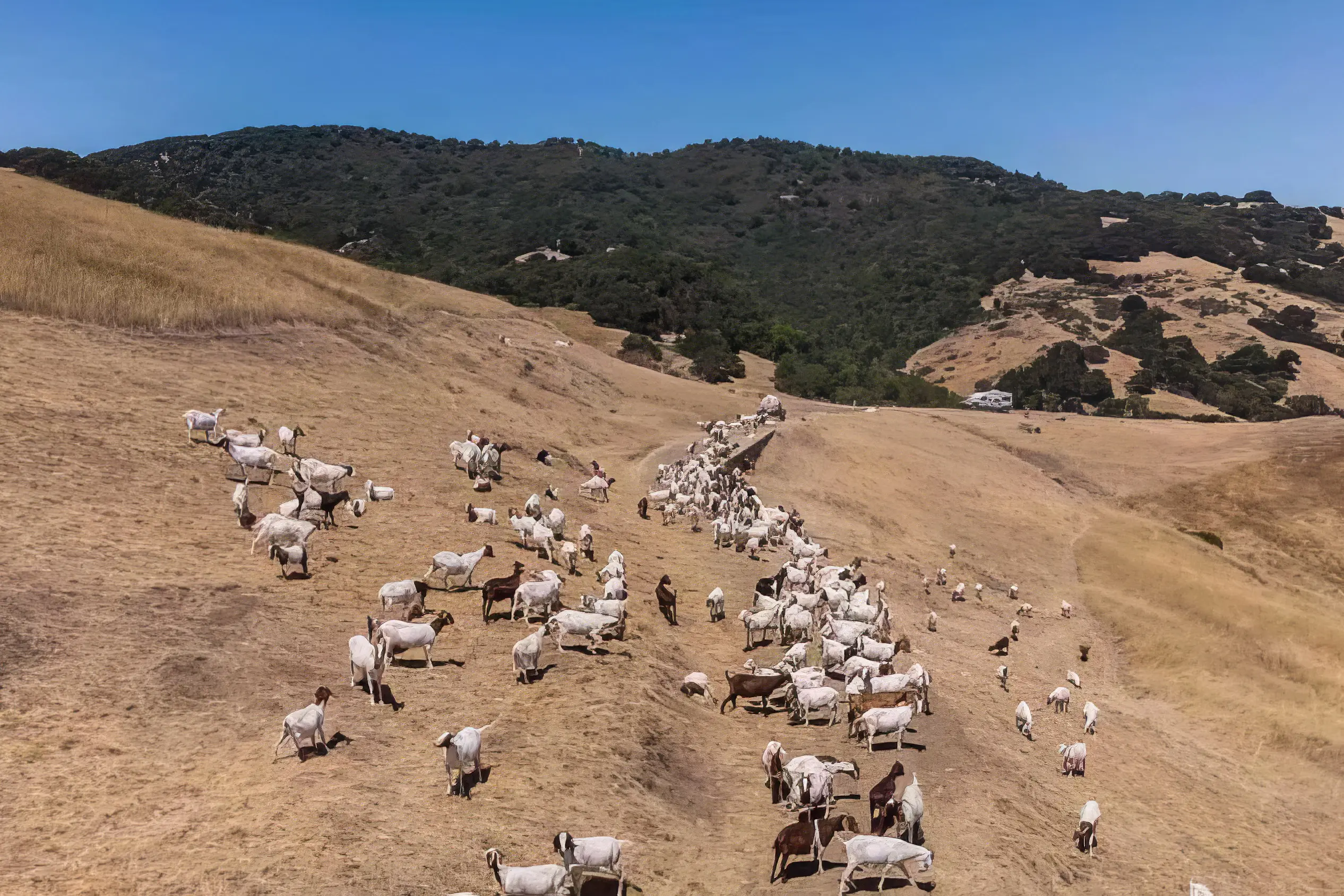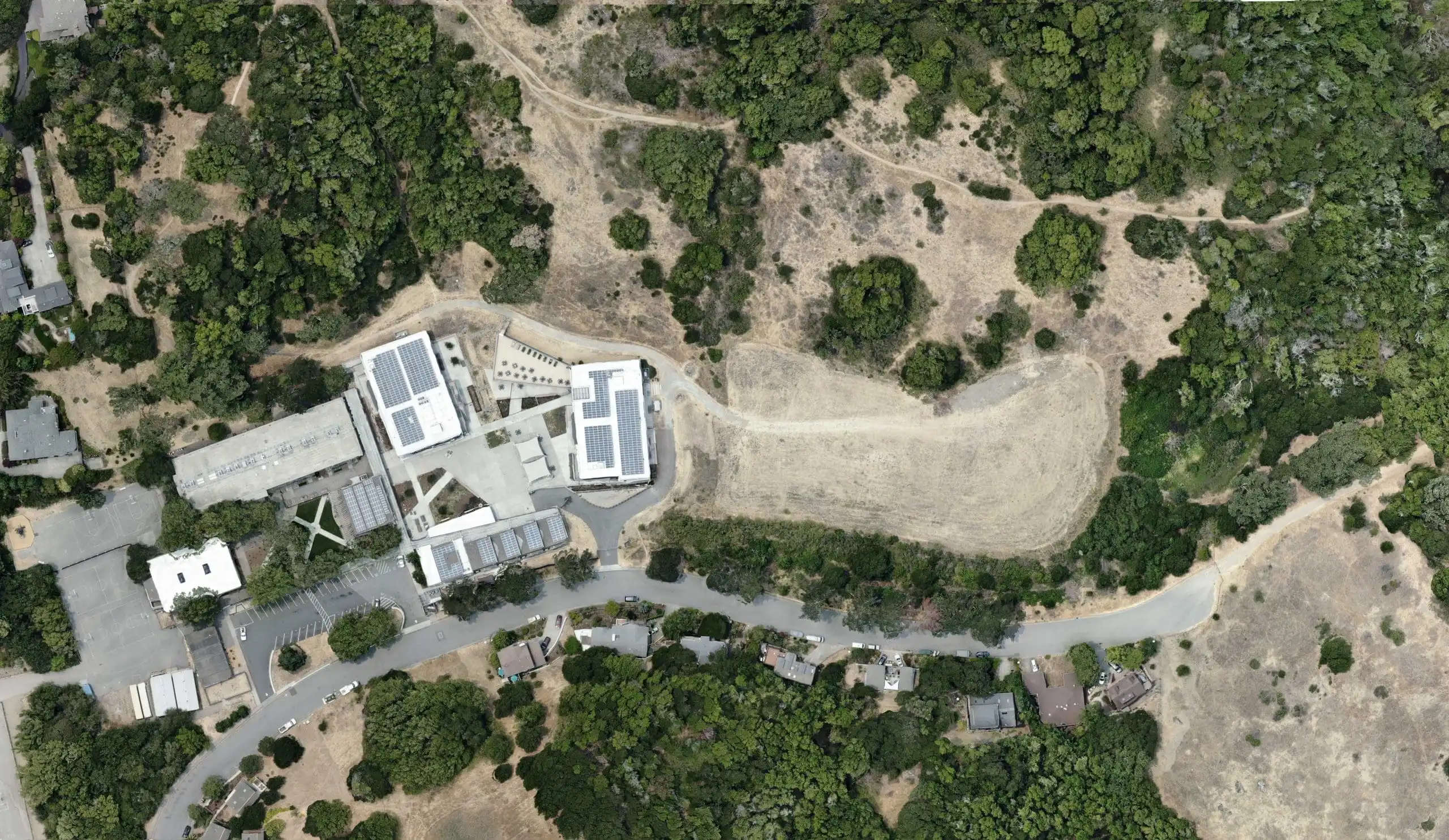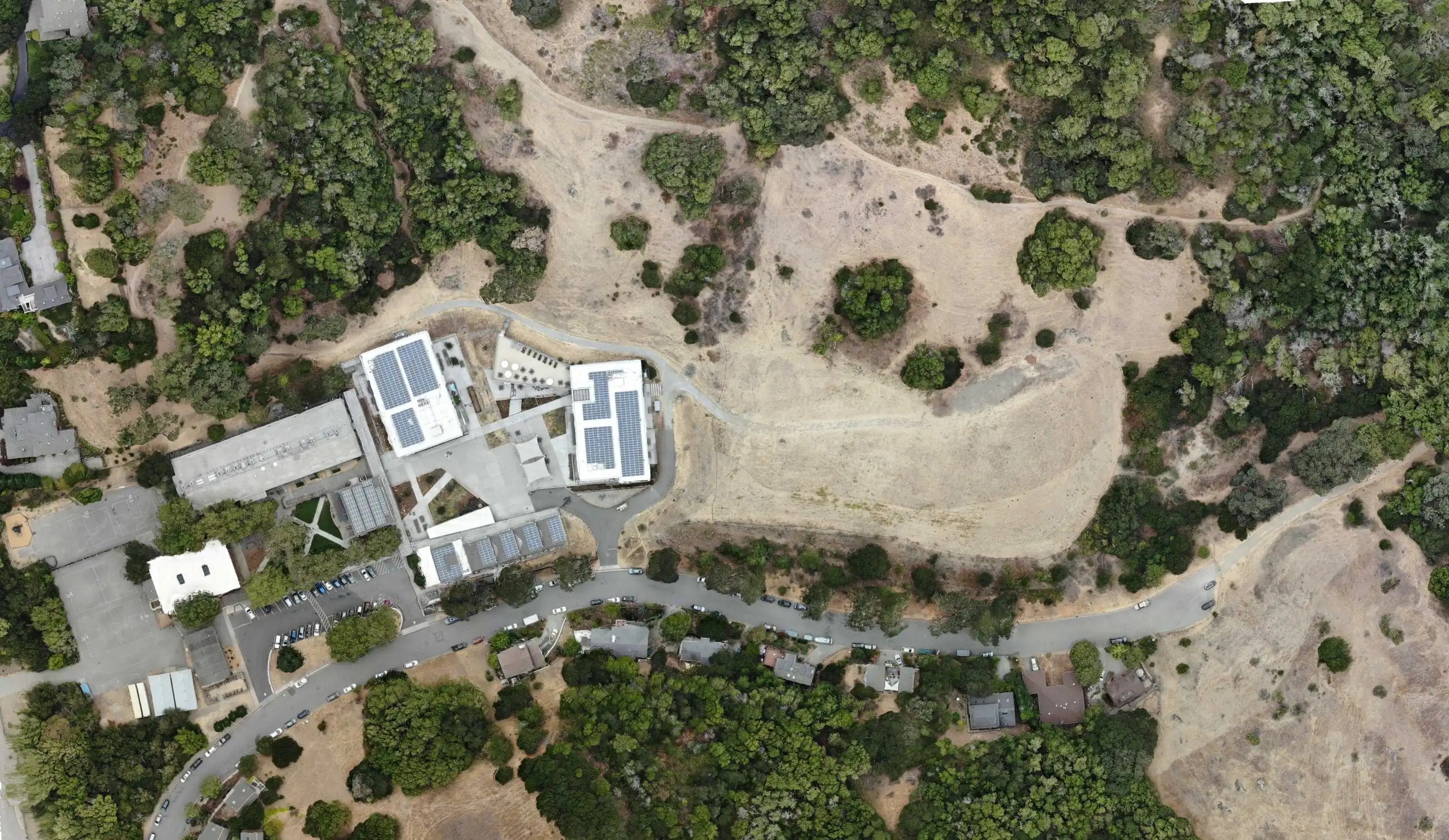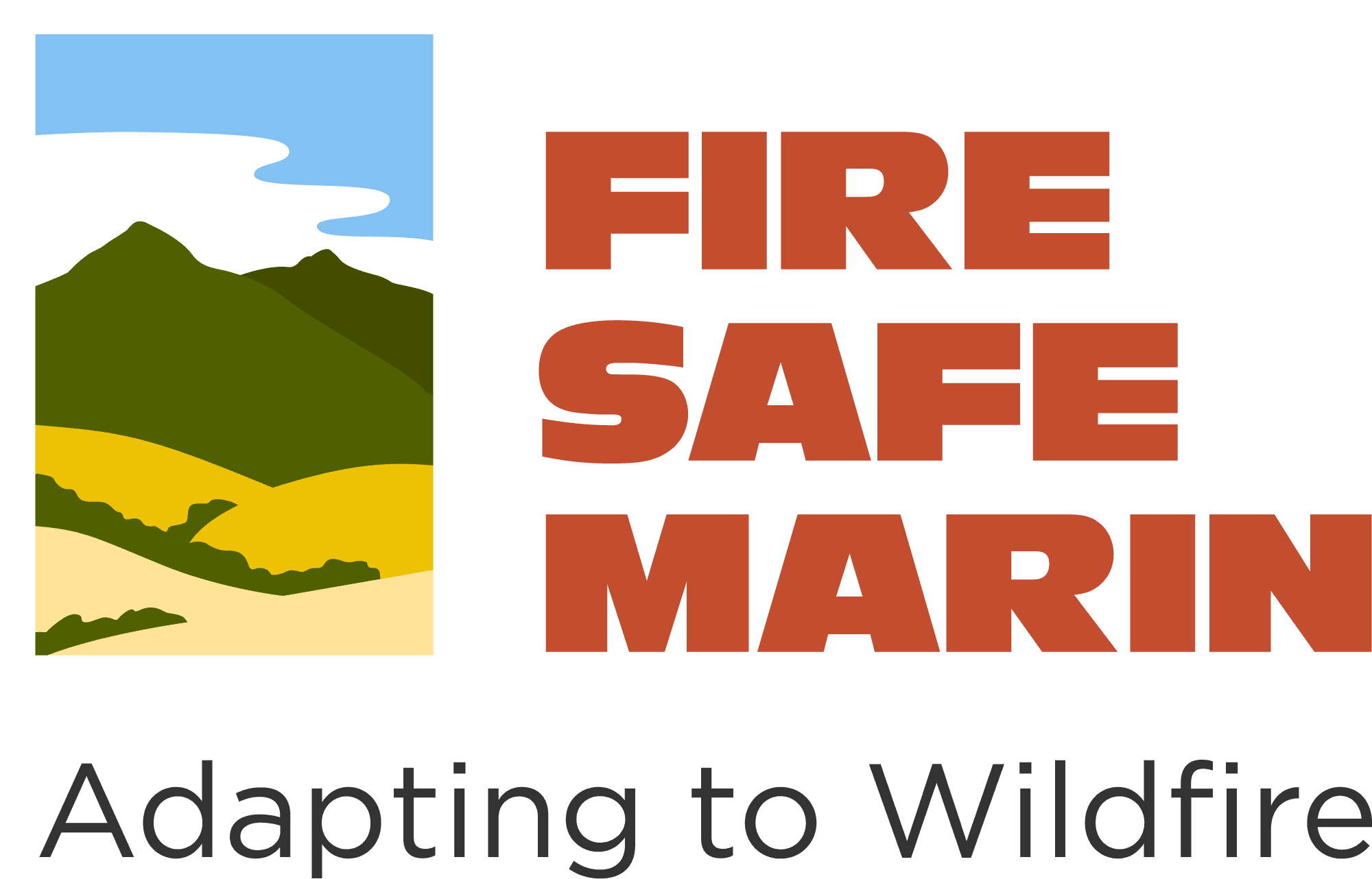IN THE EVENT OF AN EMERGENCY THIS SITE IS NOT MONITORED. FOR CURRENT INFORMATION GO TO HTTPS://EMERGENCY.MARINCOUNTY.ORG.
Goat Grazing
About the Program
Goat grazing can be a cost-effective, environmentally sound way to clear combustible vegetation and promote the growth of native grasses and beneficial plants, particularly for large areas (10, to 100+ acres) and in steep or difficult terrain.
Grazing can efficiently treat areas that are inaccessible or difficult to manage with mowers and weed eaters, areas where prescribed burns are inadvisable, and sensitive areas where the application of herbicides is not appropriate.

Looking to Hire Goats?
If you’re a large landowner (10+ acres) goat grazing might be an effective tool to help you reduce wildfire hazards. Smaller residential properties are usually not cost-effective, due to the cost of transporting goats by truck. Fire Safe Marin offers a list of local goat grazing contractors. Another helpful resource is Match.Graze.
2018 was the first year for large scale goat grazing in the Ross Valley. The Sleepy Hollow Fire Protection District organized a consortium of large land owners including Marin County Open Space, San Domenico School, Triple C Ranch and Rocking H Ranch to create defensible space and shaded fuel breaks utilizing goats. Two herds of goats and sheep, totaling 800 head, worked in Sleepy Hollow, Terra Linda, and Lucas Valley in 2018 as part of a large-scale fire hazard reduction project This $171,900 project was a collaborative effort resulting from the Marin CWPP and 2016 SHFPD Wildfire Hazard and Wildland Urban Interface Area Assessment, which identified key locations for fuel reduction to reduce the impact of wildfires in Sleepy Hollow and neighboring communities. The multi-agency project reduced hazardous fuels on more than 200 acres of high-risk grass woodlands in central Marin.
Recognizing that goats offer a natural, economical, and sustainable solution to reducing vegetation fuel and wildfire hazards, in 2019 the Sleepy Hollow Fire Protection District and Fire Safe Marin helped bring 1200 goats to central Marin where they grazed more than 600 acres of high-risk grass woodlands, clearing 3+ acres a day of vegetation, including non-native, invasive plants. This approach proved cost-effective and gentle on the land, reducing the fuels for fire, restoring native grasslands where firefighters can more easily control fires, limiting greenhouse gas emissions, and creating pastoral fuel breaks in the open spaces between communities. In 2020 the project was again expanded to include more areas in Fairfax, San Anselmo and Central Marin. The 2021 program is similar in size and scope.


Fairfax: White Hill Middle School (before and after)
About the Goats
- The grazing contractor is Star Creek Land Stewards
- Property owners are still responsible for creating at least 100′ of defensible space from all structures on their property.
- The goats are contained by a portable, solar-powered electric fence. The fence is moved daily by herders. Thank you for your patience and understanding of the work and activity in the area – they’ll move through quickly, and will only be in your area for a few days at most.
- The temporary fencing may need to be installed on private property – it usually takes less than 1 hour to erect 1 acre of new fencing per day, and it is removed the following day.
- The goats do not eat dead vegetation. A follow-up effort may be needed to remove dead vegetation on private property.
- The goats are not guaranteed to eat all, or even any, or the vegetation that contributes to wildfires.
- The goats primarily reduce fine fuels, such as grasses. The stalks of certain species like broom and shrubs are left behind and may be unsightly until they break down or are removed manually (there is no guarantee that this will happen in all locations).
- Goats are only a small part of an overall approach to reducing wildfire hazards.
- To protect your home, you MUST create your own defensible space and take steps to harden your home!
- The goats sometimes eat species we’d prefer to protect. Juvenile trees, which contribute to the wildfire hazard, are sometimes killed.
- Although the reduction of encroaching trees and shrubs is part of the overall goal, most small trees will survive, even if it looks like their bark has been removed.
- The goats eat the lower limbs of trees up to a height of about 6′ (much like deer, elk, and other native grazers, and as natural wildfires would do if allowed to burn). This is encouraged and helpful.
- Wildflowers grow back stronger next year!
- The goats are extremely well cared for and their health is monitored daily by professionals.
- It’s very rare that goats escape or damage ornamental landscaping – if that happens, we’ll work to make it right – please don’t complain on social media before contacting us!
- A livestock guardian dog accompanies the goats, and it does bark at night when predators are nearby
- The goats need water. If you can provide a garden hose and access for the sheepherders, it would be appreciated.
- Permission must be granted by private property owners to graze on their property
- Goats are quieter than power tools, but do make noise
- Goats are usually in one location for 24-36 hours before moving
- Property owners should keep their pets away from the goat fencing, and never allow their animals to go inside the fence, as the guardian dog is very protective of its herd.
Research: Goat Grazing as a Wildfire Prevention Tool
An excerpt from Goat Grazing as a Wildfire Prevention Tool research report:
Fuel treatments aimed at reducing both horizontal and vertical continuity in fuels are of paramount importance as a prevention measure against fire propagation. Possible techniques include pruning, thinning (mainly low thinning), mastication, prescribed burning, and prescribed (or targeted) grazing. Their main target is crown fire avoidance by treating surface fuels and promoting low density and vertically discontinuous stands, thus eliminating fuel ladders. Grazing is an effective, nearly carbon-neutral weed control technique that is cost-effective, nontoxic, and nonpolluting. Goat grazing is a very interesting solution: if confined by a metallic or electrified fence within a restricted pen, with a rather high density, goats browse the available foliage and twigs from all woody plants as well as all herbaceous vegetation. They can feed on a variety of shrubs, some of which are useless for other domestic species, and are therefore the best adapted for the consumption of all the Mediterranean shrubs which represent the fuel ladder. The appropriate choice of season of grazing, type of plant species and type and amount of biomass to be eliminated, livestock density, social structure of the herd, grazing time per day, type of fencing, and size of pens define the prescribed grazing system.







